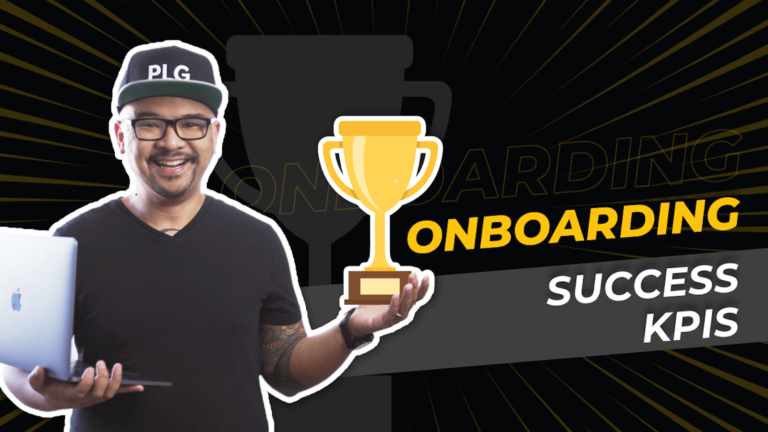Even the most beautifully designed product won’t be successful if your customers don’t know how to use it.
That’s where your onboarding customer process comes in. With customer onboarding, creating a great first impression starts within the first hour of using your product (not the first day or week). And a negative customer experience can result in a high churn rate that prevents a well-built product from getting off the ground.
But how do you create a positive customer experience when that same customer knows little to nothing about your product? Personally, I like to think of customer onboarding the same way I learn how to play a new video game.
What does that look like?
When you first log in to a new game, you learn how to run, jump, swim, or throw a punch. Once you master these fundamental movements, you can tackle more advanced techniques, allowing you to progress to the next level.
At the same time, you would never log into a friend’s console and attempt Level 10 of an unfamiliar game.
And therein lies the delicate balance you must strike with client onboarding: create a step-by-step process for the client to master certain features, keeping them engaged and challenged without being overwhelmed.
In this article, I share:
- What a Successful Onboarding Process Looks Like
- The 5-Step Process To Improve Customer Onboarding
- Common Onboarding Mistakes (And How to Avoid Them)
- Refine Your Onboarding Process To Create a Positive Customer Experience
What Successful Onboarding Customer Looks Like
First things first: every onboarding experience is a work in progress — no single product has fully perfected it.
When the Voiceflow team began streamlining our onboarding process, we set a straightforward goal: allow users to build a voice app in 30 minutes. That goal set the pace for all upcoming projects, whether it be tutorials, webinars, or even one-on-one calls with clients.
And while our initiatives (and perhaps our overall goal) evolve over time, our team understands that our role is to teach customers how to use our product and its functions. To put this challenge into perspective, I like to think of client onboarding as building with Legos, following this three-step process:
- Know the pieces: First, look at the pieces (or tools) that are available to you.
- Know how they fit: Then, look at how those pieces fit together.
- Begin to build: Fit two or more pieces together, then repeat the process. Now, you understand how to use a basic block.
To create a memorable onboarding experience, your goal is to teach the fundamentals to each customer, so they can expand upon their skillset.
5 Steps to Improve Your Customer Onboarding Process
The onboarding process is nothing more than teaching an individual to learn a new tool. But as with all educational settings, learning something new can be overwhelming, intimidating, and sometimes downright frustrating. To keep users engaged — or even excited to advance to that next step — take the following actions:
1. Set Your Goal
Before you begin, ask yourself: what is the goal of onboarding?
Rather than looking at a user’s first 30 days with the product, look upon the immediate horizon. What do you want users to experience within the first hour or even 24-hour span with the product?
When setting your goals, consider the following:
- Churn: As a worst-case scenario, a user will churn after their first product experience. How do you prevent this from happening in the future?
- One-day bucket list: What actions do you want each user to experience within their first 24-hours of the product?
2. Onboard Yourself
Understanding your customer activation process begins with going through the onboarding process yourself. Whether you are launching a new product or conducting an audit on an existing one, go through each step in the process and ask yourself:
- Where do you feel stuck, frustrated, or confused?
- Where are there gaps within each step — where you didn’t quite know which action to take next?
3. Speak to Your Customers
Get on the phone and onboard your customers, remembering that you are trying to scale this experience. Witness them test each step in the process, being sure to record their reactions.
- Where do the customers make a mistake? This could be a sign of a poor user experience.
- Does the onboarding process match their technical ability? Could you customize the experience more for the end-user?
4. Customize the Onboarding Process to the End-User
Onboarding is about getting new users comfortable with an unfamiliar product. While you’re working to scale the overall process to reach more customers, you can’t forget that each of these individuals is coming to you with their own unique set of experiences, goals, and skills.
Therefore, try to create different journeys for different customers, segmenting your user base by the following:
- Channel: Which channel are you solving for? For example, at Voiceflow, we have to know if the customer was building a voice app, chatbot, or Alexa for the web.
- Role: Is the user a designer, maker, or developer? Is there a way to customize the step-by-step process to each individual department?
- Technical ability: Will the onboarding process stretch the individual’s skill set enough to keep them engaged, but not so far that they get frustrated and quit the product?
- User case: What is the user’s end goal? What are they hoping to accomplish, and how can you help them get there?
5. Get Comfortable Leveling Up
If an onboarding process is successful, the customer will continue to use and master your product. At this stage, you want to present different, more challenging scenarios to the user. Ask yourself, “What educational materials will keep this user coming back?”
To answer this question, think about the following:
- How can you transform a casual user into a power user?
- How can you transform an engaged user into a brand advocate for your company, thereby completing the customer lifecycle?
Common Onboarding Mistakes (And How To Avoid Them)
A successful onboarding experience is entirely dependent on your ability to cultivate a fun, rewarding experience for your customers.
Why?
Because you are competing against every other app, website, or Chrome tab for your customer’s attention. Therefore, reading endless pages of mundane content won’t lead to a successful onboarding process because it feels like a chore — not a fun experience vying for their attention.
To ensure you capture your customer’s attention during that all-too-tight window, avoid the following pitfalls:
- Designing for looks over function: You need to strike a fair balance between what looks aesthetically pleasing, and what provides a proper user experience.
- Reacting, rather than forming a plan: At the onset, set clear goals on what you want to accomplish. Determine how you will pivot an onboarding experience if the customer is frustrated or confused by the product.
- Overthinking things: In the end, client onboarding is nothing more than human psychology. Your customers will help you refine this process, so don’t stress too much trying to make it perfect from the get-go.
If you’re looking to develop your own client onboarding experience — and want to avoid the above mistakes as much as you’re able — consider taking the following actions instead:
- Record yourself trying new products: Hit the record button every time you try a new product online. Take mental notes of where you hit certain roadblocks, as it will help you refine your own process.
- Get on the phone and talk to customers: An onboarding experience is entirely dependent on customer feedback, yet many people avoid talking to their customers. Get on the phone, and find out what they like, dislike, or would like to improve about the process.
Refine Your Onboarding Process To Create a Positive Customer Experience
Client onboarding is the key to launching a successful product. Without a successful onboarding process, customers can churn before they discover the key benefits of your service.
Our Voiceflow onboarding team developed a positive onboarding experience that helps users build voice apps in 30 minutes or less. By setting clear goals, trying to onboard ourselves, speaking directly to customers, and customizing the journey to the end user, we’ve been able to develop a process to delight (and retain) our customers.









